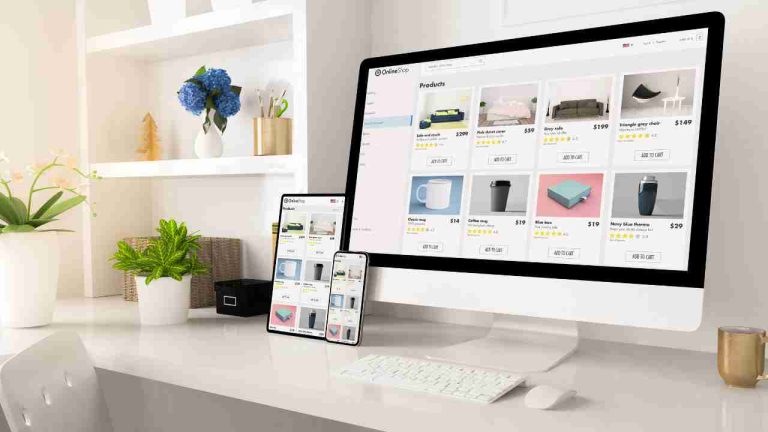- 1. 10 Magento personalization tips to boost your website conversion rate
- 2. Create customer segments
- 3. Create customer groups
- 4. Use smart shopping rules
- 5. Set up multiple stores
- 6. Offer reward programs
- 7. Personalize exit-intent popups
- 8. Use Product Recommendations
- 9. It’s all about going the extra mile
A loyal customer base is essential to building a successful online business. But to inspire customer loyalty, offering a great selection of products isn’t enough. You also need to focus on creating a user experience that caters to your audience’s interests.
A high-performance website that offers a feature-rich and user-friendly shopping experience is an excellent place to start. But to deliver the best customer experience possible, you need to personalize your website.
A 2018 survey by Accenture found that 91% of consumers were more likely to shop from a brand that recognizes, remembers, and provides relevant offers. Further, they also found that 83% of those customers were willing to share their data with a business to facilitate a personalized user experience, making a strong case for personalization in ecommerce.
Personalization helps provide an exclusive shopping experience that can foster loyalty and boost website conversion rates. In this article, we’ll give you ten useful Magento personalization tips to help you convert your website traffic to sales.
10 Magento personalization tips to boost your website conversion rate
- Show related products
Regardless of your industry, niche, or audience, using related products is one of the most fundamental ways to promote your products and improve customer engagement. Offering customers recommendations related to the products they’re interested in creates a better shopping experience as they don’t need to search for relevant products.
Magento’s related products can help you boost your average order value and conversion rate. Recommending similar products that a customer might like can help you nudge them into exploring your website and its offerings instead of abandoning their purchase.
Let’s take an example of an online store retailing sports apparel. For a customer viewing a pair of running shorts, using related products to recommend other gear like a running bag, hydration belt, or running shoes can be helpful.
- Promote upsells and cross-sells
Like related products, upsells and cross-sells are perfect for promoting products and boosting customer engagement. Upselling products to your customers is a great way to direct their attention to items they might wish to buy instead of the ones they’re currently browsing or have in their cart.
Upsell products are usually items of higher quality, better profit margins, or ones that are generally more popular with your customers. You can also fortify your upselling strategy by cross-selling items on the cart page to promote impulse purchases before customers check out.
For example, suppose you run an online website selling kid’s toy cars. In that case, you can promote an upsell of a toy truck or a toy train on the product page and promote a cross-sell of a kid’s helmet on the cart page.
- Leverage custom catalogs, pricing, and private sale events
Adobe Commerce’s B2B module allows merchants to maintain and offer custom catalogs for customers with company accounts. It also lets them offer custom pricing to their customers and supports creating unique catalogs using an easy two-step process.
Presenting your customers with a curated selection of products tailored to their needs is an effective way to personalize your website user experience. Complementing it with tailored pricing and discounts can help you create a premium buying experience.
You can even organize private, invite-only sales events to deliver an exclusive shopping experience to your top customers. Giving your customers VIP treatment is guaranteed to keep them coming back for more and make them loyal to your business for life.
Create customer segments
For those that don’t have access to Magento’s B2B module, the customer segmentation feature in Adobe Commerce is the ideal substitute. It allows merchants to create dynamic segments based on customer attributes like order history, cart contents, and address and helps them deliver unique shopping experiences.
The customer segments feature also supports displaying content and promotions that adapt dynamically to customer behavior and showcase products matching their interests. It can also be used to alter products and promotional media on a website in response to customer interactions.
Customer segments are updated in real-time based on customer shopping activities. They can be used to offer targeted discounts using cart price rules to customers according to their geographical locations or the products in their shopping carts.
Create customer groups
For Magento 2 Open Source users who don’t have access to the B2B module or customer segments, the customer groups feature in the platform is the next best option to offer custom pricing and create a personalized shopping experience.
You can customize everything from tax rates and shipping costs to product pricing and discounts for each customer individually using customer groups. A single Magento installation can support a limitless number of customer groups. However, default Magento functionality doesn’t support assigning a customer to multiple customer groups.
Fortunately, you can easily work around this limitation with the help of an ecommerce web development team. By building a custom extension that enables adding customers to multiple groups, you can offer your customers personalized discounts on specific products and even across the entire catalog.
Use smart shopping rules
Another way to offer a personalized experience is to use Magento’s promotional features to trigger discounts based on a set of conditions determined by customer behavior and attributes.
Under the Marketing section in the admin panel, you’ll find two sets of price rules — Catalog Price Rule and Cart Price Rule. These can be configured using logical statements to define products and situations that trigger discounts automatically or using coupon codes.
You can even use a mix of the two to set up conditions that trigger discounts and offer incentives like:
- free shipping when cart value exceeds a certain amount,
- send coupon codes for a specific product or category of products,
- schedule seasonal promotions to offer site-wide discounts.
Set up multiple stores
Magento supports operating multiple websites, stores, and store views from a single installation. This feature is a great way to tailor your offerings to your customers based on their geographical locations and even create a multi-brand strategy to target customers based on their preferences.
You can even leverage Magento’s multilingual support to tailor your content to your audience’s location and offer support for local currencies too. Adapting your website layout and design to cater to your audience in different areas can help you leverage this feature and capitalize on local trends effectively.
Additionally, you can also set up unique catalogs and categories for each region and offer discounts based on local holidays and celebrations to increase sales.
Offer reward programs
Creating reward programs is an effective way to boost customer loyalty and encourage your customers to keep coming back to your website to make their purchases. Reward programs can help drive traffic, increase sales, and improve customer satisfaction rates.
They can be used to incentivize customers to perform acts that can help achieve your business goals. Offering discounts for referrals, when users sign up for your newsletter, or when they leave a review on your social media channels are some ways to create a winning reward program.
To help maximize its reach and potential, you can promote your reward program using social media and paid ads to drive more traffic to your website and increase its conversions.
Personalize exit-intent popups
It’s no secret that popups can hurt the website user experience if they start showing up the minute someone lands on a website. However, exit-intent popups are popups that only trigger when a customer shows an intent to navigate away from a website.
They can help you promote products, offer discounts, and discourage customers from leaving your website without hurting the user experience. Personalized exit-intent popups take it a step further by tailoring offers based on customer behavior. They’re an effective way to improve customer retention rates and boost sales.
Although there are several exit-intent popup extensions available for Magento stores, there aren’t many that can offer personalization in this way. With Magento extension customization, you can reconfigure existing extensions to capture recently viewed products and encourage customers to follow through with their purchases by offering discounts on those products.
Use Product Recommendations
The final personalization tip comes courtesy of Adobe’s proprietary AI-powered technology — Adobe Sensei. This technology is made available to Adobe Commerce users through the Product Recommendations tool.
Adobe Sensei’s algorithms analyze customer data collected from a store to provide its visitors with tailored recommendations based on their shopping behavior and interests. It also integrates into Magento’s page builder, enabling merchants to offer product suggestions dynamically.
Further, it can also recommend products based on visual similarity, helping customers discover products that match the ones that interest them. This creates a highly engaging and relevant shopping experience for users and helps them boost their sales.
It’s all about going the extra mile
Magento has everything you need to build the ultimate ecommerce website. It offers a perfect blend of powerful commerce functionality and advanced personalization features. Following the tips in this article will help you leverage the platform effectively to achieve your business goals.
Offering consumers a carefully crafted shopping experience that’s relevant, intuitive, and convenient is the best way to boost your website conversion rate. Personalizing your website to your customer’s needs can help your brand stand out in the crowd and maximize the effectiveness of your marketing strategies.
____________________________________________________________________________
Author: Jan Guardian
Jan is the Chief Business Development Officer at Staylime, a Magento design and development company headquartered in Redwood City, California. He is a Member of the Magento Association and an Adobe Sales Accredited Magento Commerce professional. Jan is responsible for developing and leading the sales and digital marketing strategies of the company. He is passionate about ecommerce and Magento in particular — throughout the years his articles have been featured on Retail Dive, Hacker Noon, Chief Marketer, Mobile Marketer, TMCnet, and many others.







